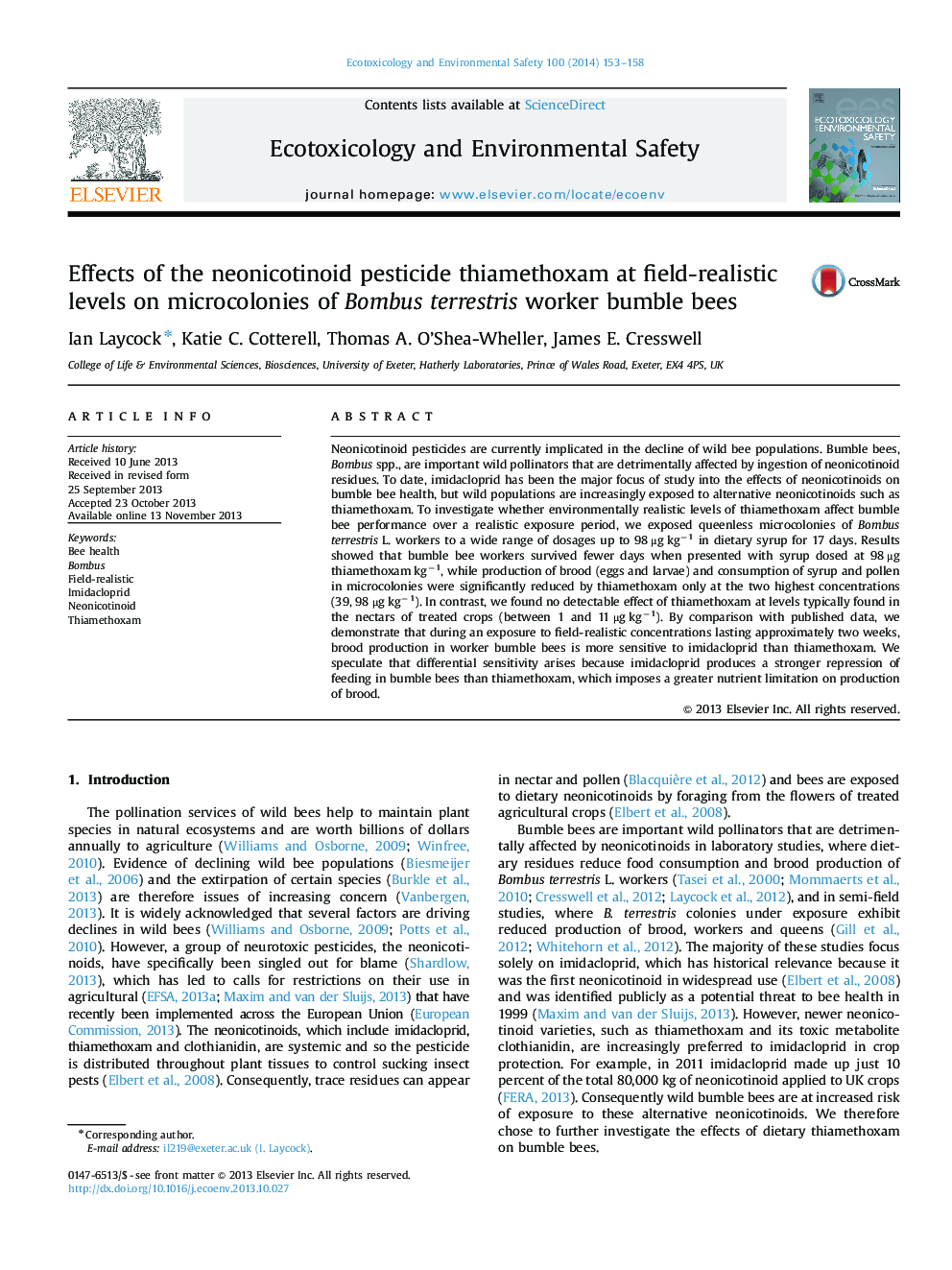| Article ID | Journal | Published Year | Pages | File Type |
|---|---|---|---|---|
| 6312231 | Ecotoxicology and Environmental Safety | 2014 | 6 Pages |
Abstract
Neonicotinoid pesticides are currently implicated in the decline of wild bee populations. Bumble bees, Bombus spp., are important wild pollinators that are detrimentally affected by ingestion of neonicotinoid residues. To date, imidacloprid has been the major focus of study into the effects of neonicotinoids on bumble bee health, but wild populations are increasingly exposed to alternative neonicotinoids such as thiamethoxam. To investigate whether environmentally realistic levels of thiamethoxam affect bumble bee performance over a realistic exposure period, we exposed queenless microcolonies of Bombus terrestris L. workers to a wide range of dosages up to 98 μg kgâ1 in dietary syrup for 17 days. Results showed that bumble bee workers survived fewer days when presented with syrup dosed at 98 μg thiamethoxam kgâ1, while production of brood (eggs and larvae) and consumption of syrup and pollen in microcolonies were significantly reduced by thiamethoxam only at the two highest concentrations (39, 98 μg kgâ1). In contrast, we found no detectable effect of thiamethoxam at levels typically found in the nectars of treated crops (between 1 and 11 μg kgâ1). By comparison with published data, we demonstrate that during an exposure to field-realistic concentrations lasting approximately two weeks, brood production in worker bumble bees is more sensitive to imidacloprid than thiamethoxam. We speculate that differential sensitivity arises because imidacloprid produces a stronger repression of feeding in bumble bees than thiamethoxam, which imposes a greater nutrient limitation on production of brood.
Related Topics
Life Sciences
Environmental Science
Environmental Chemistry
Authors
Ian Laycock, Katie C. Cotterell, Thomas A. O'Shea-Wheller, James E. Cresswell,
